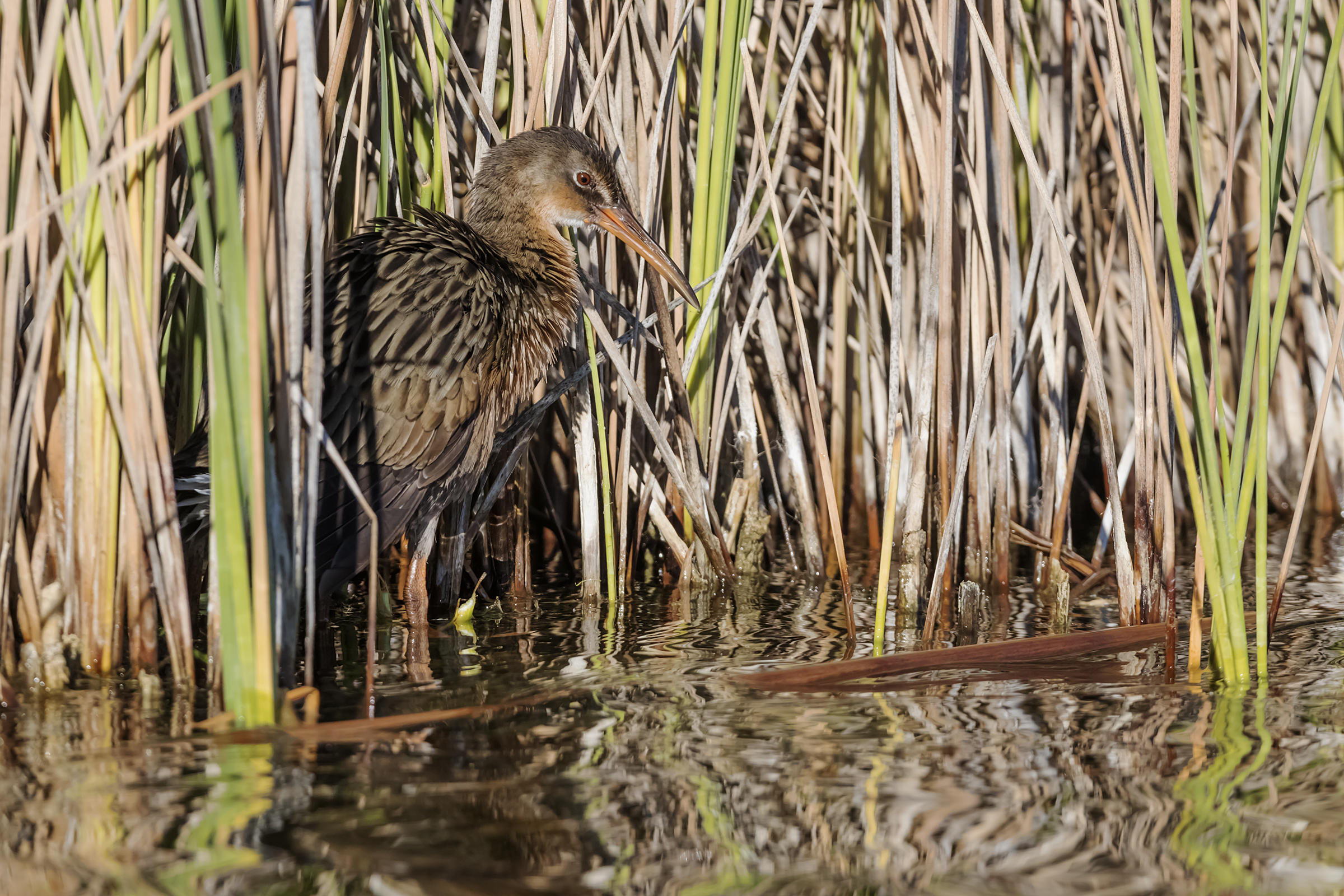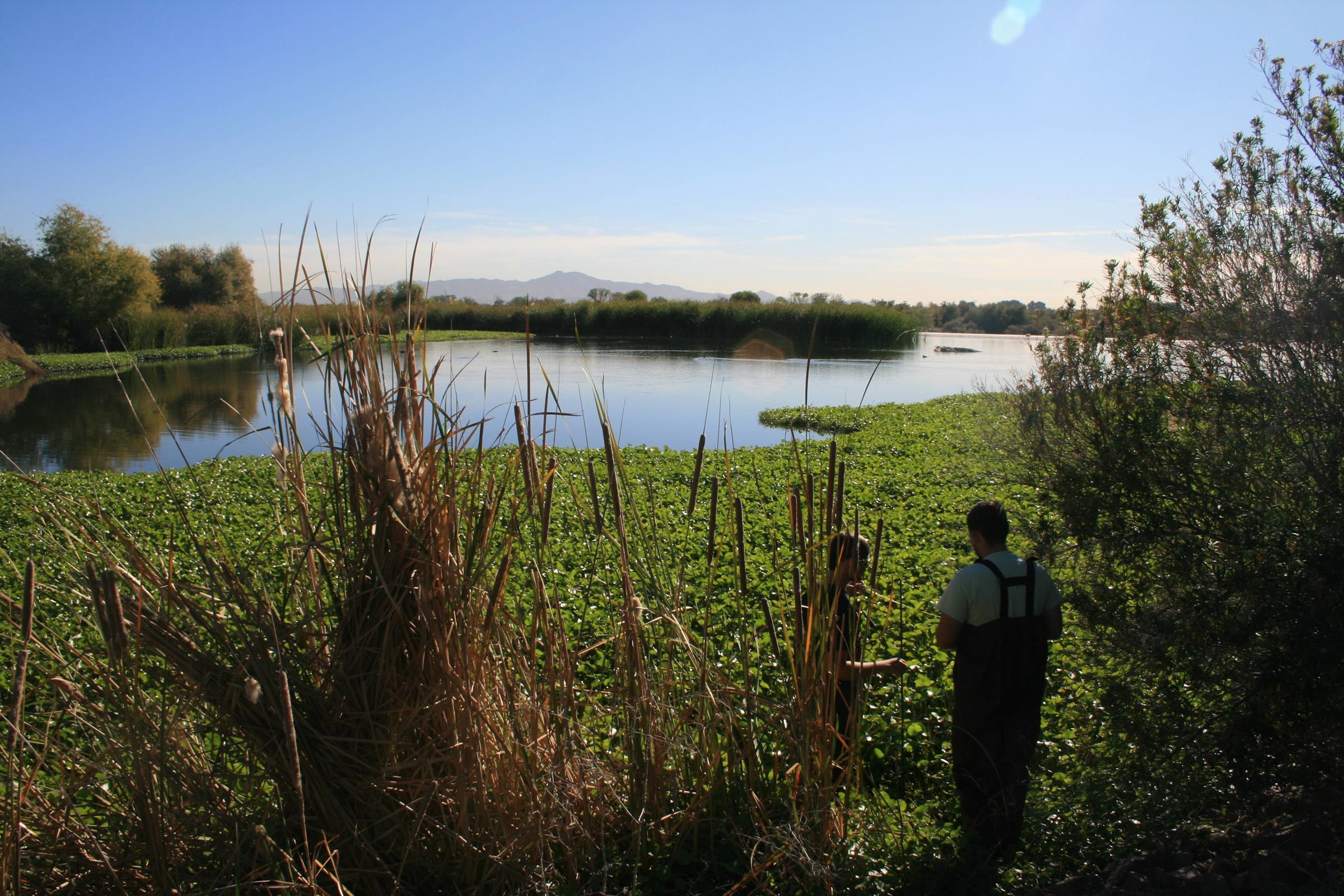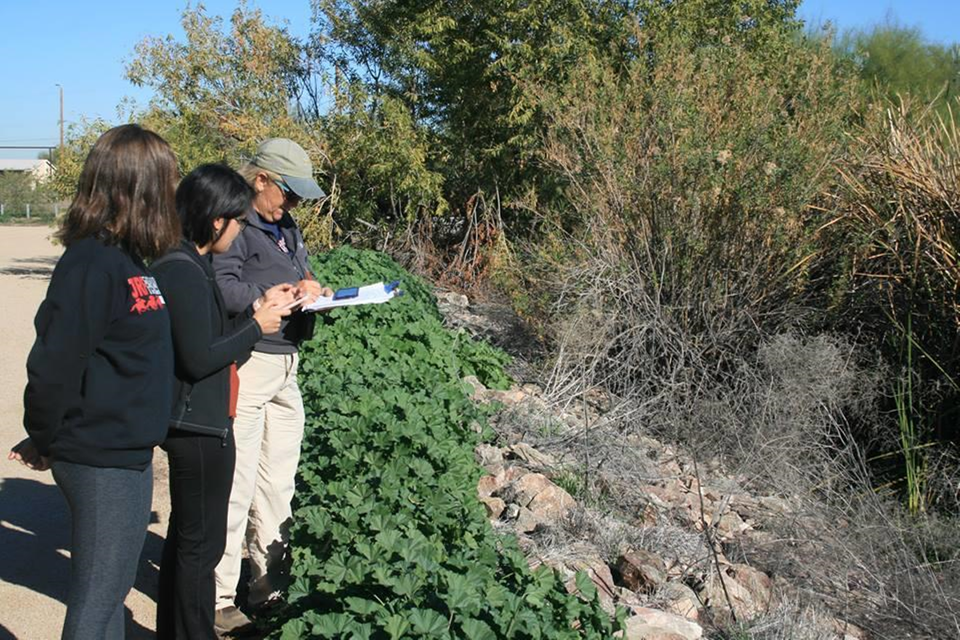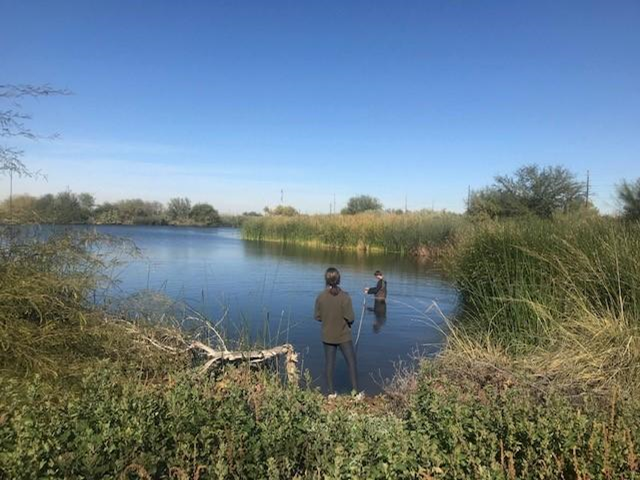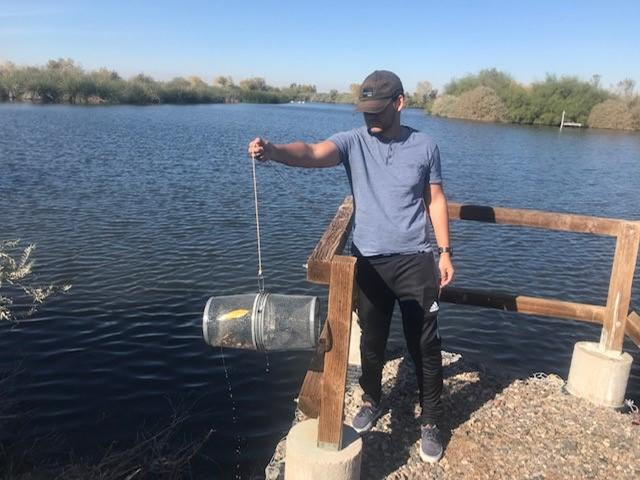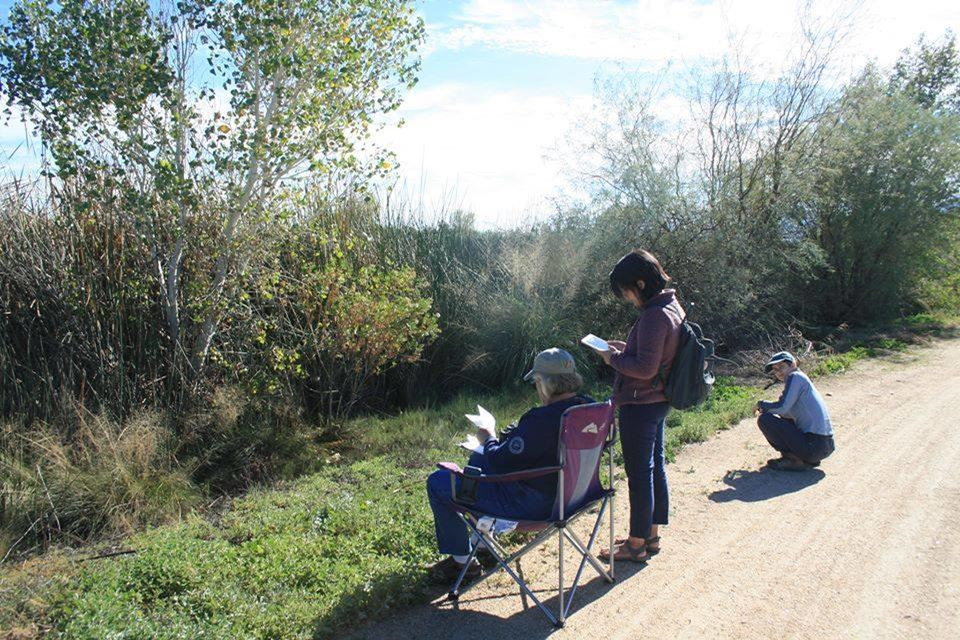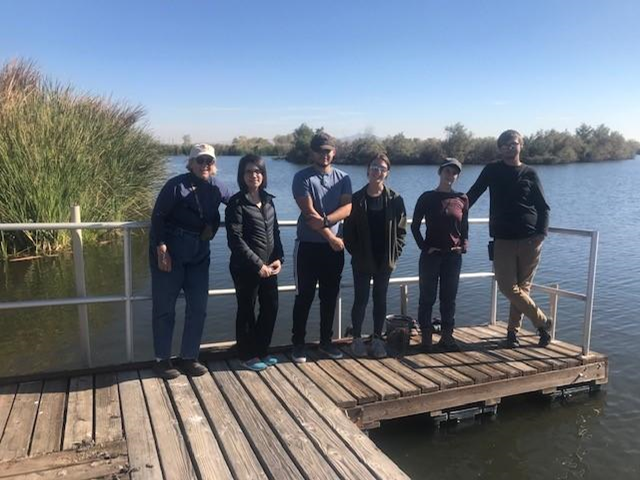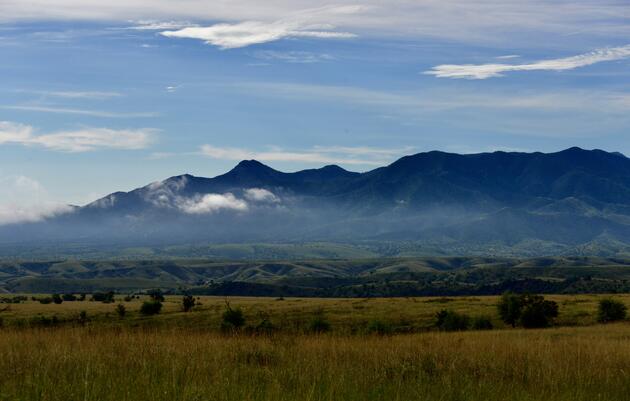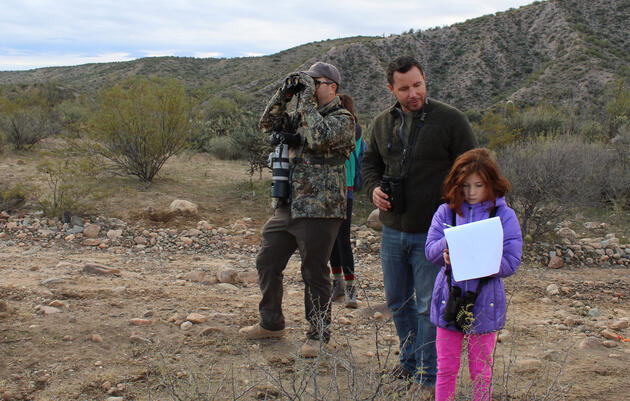The Yuma Ridgway's Rail (Rallus obsoletus yumanensis), a subspecies of the Ridgway's Rail, is a brown marsh bird about the size of a chicken.
Typically secretive and rarely seen, most usually know the bird is around when it vocalizes— letting off a repetitive, sharp clapping.
The Yuma race is a federally endangered species found in the marshes of the lower Colorado River, the Salton Sea in California, the Ciénega de Santa Clara in Mexico, and the Gila River west of Phoenix, Arizona. They prefer younger stands of cattail and bulrush, and eat crayfish, freshwater clams, and other invertebrates.
As Arizona turns farm fields into houses, and water is diverted from rivers to accommodate development, marsh habitat is disappearing—and so is the rail.
Thanks to funding from the Arthur L. and Elaine V. Johnson Foundation and Sonoran Joint Venture, Audubon Southwest is now working with partner agencies and communities to see if a home for this bird can be included in river restoration projects. We launched the project to evaluate suitable habitat for the rail on the Gila River, with a mix of spatial analysis using Geographic Information Systems (GIS) mapping tools and field measurement of marsh habitats.
The goal: gather and analyze data around the distribution of the rail, and develop a science-driven action plan with specific recommendations for habitat conservation and restoration. Using GIS, a spatial prioritization map will be developed to serve as a scientific snapshot of the species's habitat—identifying locations where the rail is likely to occur, and where restoration could generate additional habitat for it.
Our Mackenzie fellows and Dangermond fellow are all actively involved in the project, collecting data and fleshing out the GIS model. Take a look at shots from recent field work:
Vegetation Survey at Tres Rios Wetlands
Using fellows for the rail project increases our capacity to execute the project while providing meaningful opportunities to people who are underrepresented in conservation. Involving youth in on-the-ground fieldwork furthers our commitment to inspire the next generation of conservation leaders, and diversifies our movement. Read more about Audubon's fellowship programs.
Stay tuned for updates from the field in the New Year.
To support this project and other science-based conservation action, donate to the Tice Supplee Fund for Science and Conservation.

